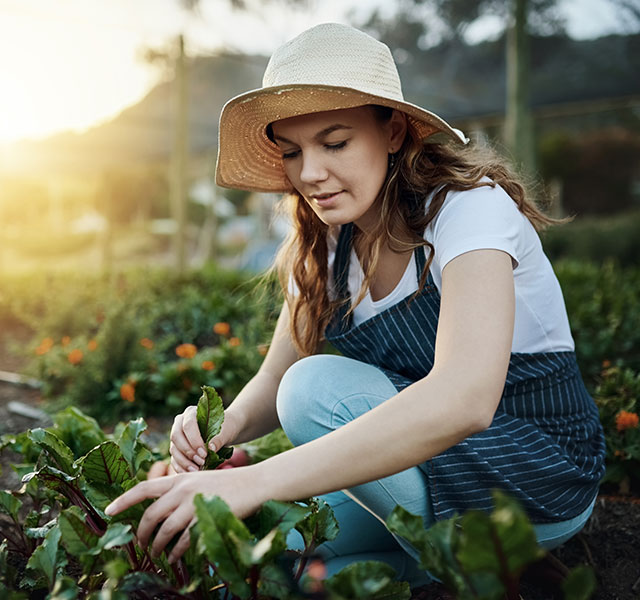Eating an array of fruits and vegetables is part of an overall healthy diet (they’re high in fiber and low in calories, for starters), but they might go above and beyond in aiding your health: fruits and veggies contain plant compounds called phytochemicals that are thought to help prevent diseases like cancer.
“Phytochemicals act like antioxidants—they’re nutrient protectors and might stop cancer-causing agents from forming,” says Molly Myers, a registered dietitian nutritionist with the Henry Ford Cancer.
Scientists are still studying exactly how phytochemicals work, but they’re thought to reduce inflammation, strengthen the immune system, and lessen the likelihood of damaged cells from reproducing. (Among other purported benefits.) While they aren’t a cure for cancer, phytochemicals are important for everyone to ingest—it’s never too late to start healthy eating habits. Different colors of fruits and vegetables contain different types of phytochemicals, so for the highest preventative measures, it’s best to change it up and eat a varied selection.
One way to do that is by eating fruits and vegetables that are in season. “Not only are in-season fruits and vegetables tastiest and loaded with the most nutrients, but they also don’t need help from pesticides to grow or preservatives to keep them fresh,” Myers says. “In-season produce also tends to be less expensive.”
How Different Colors Of Produce Help Your Body
A wide variety of fruits and veggies are in season throughout the summer, so now is a great time to start. Check out this list to see what’s in season, when, and read below to see how each of these phytochemicals can help prevent cancer.
- Red: These fruits and vegetables are colored by natural plant pigments called lycopene and anthocyanins.
Lycopene found in produce like tomatoes, watermelon, pink grapefruit and red bell peppers may help reduce your risk of several types of cancer, especially prostate cancer. It also may help reverse damage from the sun’s rays. But lycopene is better absorbed by our bodies in foods that have been cooked rather than raw, so try using your farmer’s market tomatoes in a delicious stew.
Anthocyanins found in fruits and vegetables like strawberries, raspberries, cherries, and radishes are powerful antioxidants that help protect cells from damage. They help to keep our hearts healthy, as well.
- Blue and purple: These fruits and vegetables are colored by anthocyanins.
Along with protecting cells from cancer-causing damage, anthocyanins found in fruits like blueberries, eggplant, figs, and plums may help reduce the risk of stroke and heart disease. Studies have also shown that eating blueberries is linked with improved memory function and healthy aging.
- Green: These fruits and vegetables are colored by a natural plant pigment called chlorophyll.
Chlorophyll found in fruits and vegetables like kiwi, asparagus, and cucumber have been found to have antioxidant and anti-inflammatory properties. Cruciferous vegetables in the green group like broccoli, kale, and Brussels sprouts contain indoles, which may help protect against some types of cancer including breast, prostate and colon. Leafy greens like spinach and broccoli also provide folate, which is a B vitamin that helps reduce the risk of birth defects.
Some green vegetables like kale and spinach contain lutein, and lutein works with zeaxanthin (found in corn, red peppers, grapes and oranges) to help keep our eyes healthy. Together, they may help reduce the risk of cataracts and age-related macular degeneration.
- Orange and yellow: These fruits and vegetables are colored by natural plant pigments called carotenoids.
Beta-carotene is a carotenoid that’s found in fruits and vegetables like sweet potatoes, carrots, cantaloupe, mangoes, pineapple, yellow watermelon, and pumpkins. It’s converted to vitamin A, which helps maintain healthy mucus membranes and healthy eyes. Carotenoid-rich foods can help reduce the risk of cancer, heart disease, and can improve immune system function.While citrus fruits like oranges are not a great source of carotenoids, they are packed with vitamin C, which helps strengthen the immune system.
- White And Brown: These fruits and vegetables are colored by natural plant pigments called anthoxanthins.
Fruits and vegetables like bananas, cauliflower, garlic, ginger, mushrooms, onions and potatoes that contain anthoxanthins boast another health-promoting chemical called allicin, which may help lower cholesterol and blood pressure. They may also help reduce the risk of stomach cancer and heart disease. Some members of this group (like bananas and potatoes) are also great sources of the mineral potassium, which may help reduce blood pressure and protect against stroke.
By changing it up, not only will you load up on a variety of phytochemicals and micronutrients, but you’ll also satisfy an array of cravings, too—after all, it’s hard to get stuck in a food rut when you have so many fruits and vegetables to choose from!
For more information about cancer treatment at Henry Ford or to find a doctor or specialist, visit henryford.com/cancer or call 1-888-777-4167.
Molly Myers is a registered dietitian nutritionist with Henry Ford Cancer.



